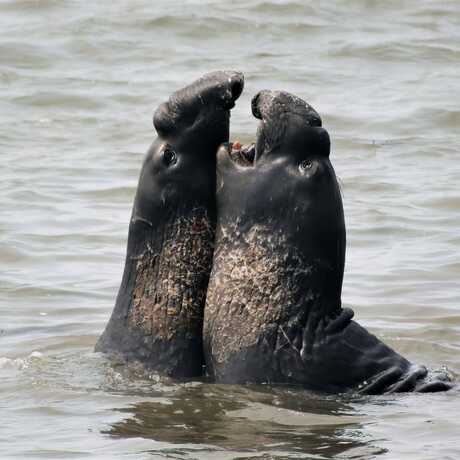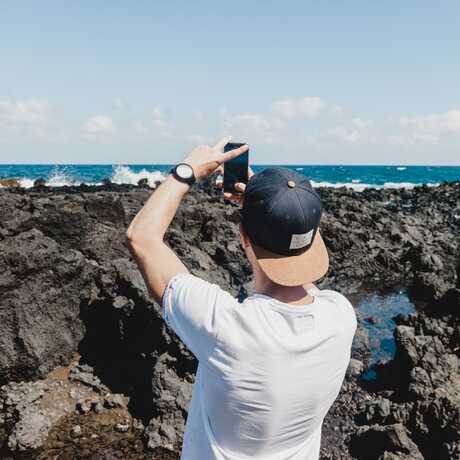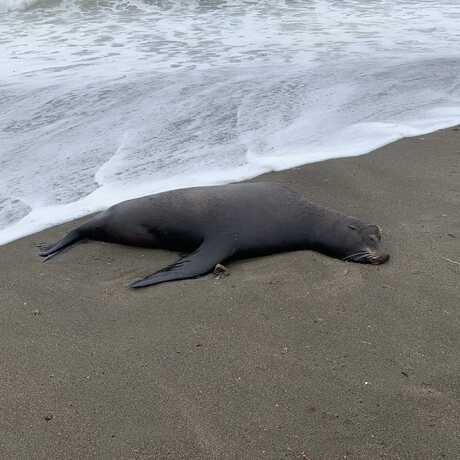Lectures & Workshops
Marine Mammal Identification Masterclass

A harbor seal (Phoca vitulina) rests onshore at Elkhorn Slough.
From mighty whales to acrobatic dolphins to frolicking sea otters, marine mammals are a diverse, charismatic group of animals—and vital components of healthy ocean ecosystems. In this free, three-part virtual masterclass led by Academy scientists, learn how to identify the marine mammals you might see cruising the California coast or stranded on shore. Helpful tip: It's a good idea to watch all three sessions in order, since each class builds upon the previous one.
Session 1: Introduction to Marine Mammal Identification

Moe Flannery
Ornithology and Mammalogy Collections Manager
Have you ever found a marine mammal carcass on the beach and wondered what species it is? If so, join us for this introductory masterclass. In the first section of this mini-course, we will discuss the natural history, biology, and unique features of common marine mammal species, which should help anyone identify live and dead marine mammals on the beach. You will learn to recognize the most common species encountered along West Coast beaches of the US, including six species of pinnipeds, two species of otters, and several species of small and large cetaceans. Additionally, you will learn how to collect the most useful scientific data from a carcass and where to report any marine mammals that you find.
Session 2: Using iNaturalist to Document Marine Mammals

Rebecca Johnson and Alison Young
Co-Directors, Center for Biodiversity and Community Science
Love the coast or photography? Interested in contributing to scientific research and conservation while enjoying the beach? This talk will focus on how you can do it all—for science! Taking photos of dead marine mammals with the Academy’s iNaturalist platform not only allows you to share what you’ve found and get identification help, you’re also providing valuable data to our Marine Mammal Stranding team, helping them determine causes of mortality and track the health of California’s pinniped and cetacean populations. Making observations is as simple as exploring, being curious, and taking photos, and this talk will walk you through the key steps of using iNaturalist and contributing to marine mammal science!
Session 3: Sleuthing with Sue: Marine Mammal Identification Case Studies

Sue Pemberton
Curatorial Assistant II, Department of Ornithology and Mammalogy
Join the Academy's Marine Mammal Stranding Coordinator, Sue Pemberton, as she shares pointers for identifying seals, sea lions, and small cetaceans seen in Northern California.
Funding for this training was provided by a 2020 NOAA John H. Prescott Marine Mammal Rescue Assistance Program Grant awarded to the California Academy of Sciences (NA20NMF4390125), Onnolee and Orlin Trapp, and the Raymond and Alkmene Bandar Endowment.
All marine mammal stranding activities are conducted under authorization by the National Marine Fisheries Service through a Stranding Agreement issued to the California Academy of Sciences and MMPA/ESA Permit No. 18786.
The Academy is a member of the Marine Mammal Stranding Network, a federal research program designed to study the causes of marine mammal strandings.